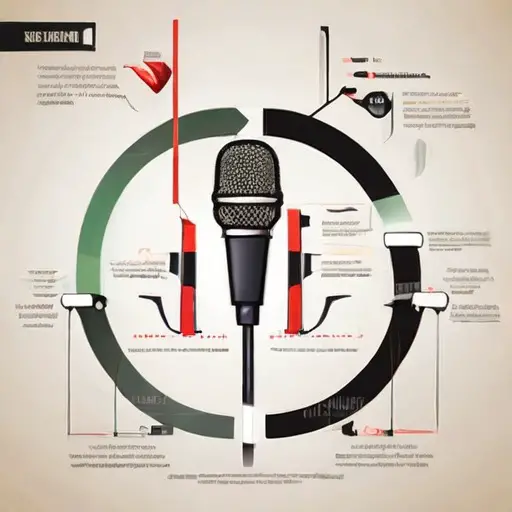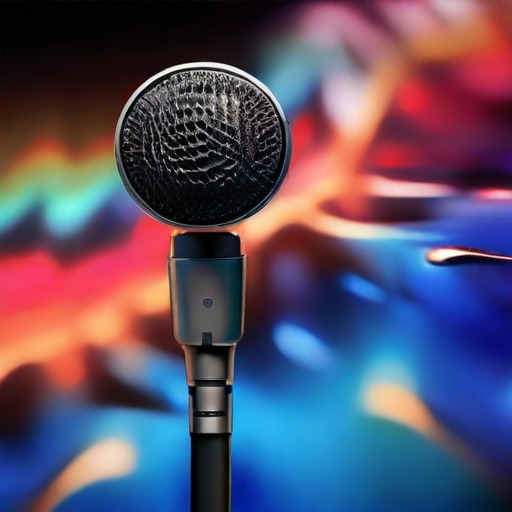Microphone feedback is a common issue that can disrupt audio clarity during live performances, recordings, or public speaking events. This phenomenon occurs when the sound from a speaker enters the microphone and gets amplified repeatedly, creating a loud and often high-pitched noise.
The causes of microphone feedback can range from improper setup or positioning of equipment to technical issues within the sound system itself. Understanding these causes is crucial for anyone involved in audio production or performance to ensure clear and uninterrupted sound transmission.
What causes microphone feedback?
Feedback is that loud, screeching sound that you sometimes hear when using a microphone. It can be annoying, and it’s usually caused by one (or more) of three things:

- The microphone is too close to the speakers This is by far the most common cause of feedback. If the microphone is too close to the speakers, it will pick up the sound coming out of the speakers and amplify it, which will cause feedback. To avoid this, make sure to keep the microphone at least 3 feet away from any speakers.
- There’s something wrong with the sound system Another possible cause of feedback is a problem with the sound system itself. This could be anything from a loose connection to a faulty piece of equipment. If you suspect there might be a problem with the sound system, have someone who knows what they’re doing take a look at it to see if they can identify and fix the issue.
- The room has bad acoustics. Sometimes feedback can be caused by poor room acoustics. This means that sounds bounce around too much in the room, which can create all sorts of problems for microphones (and other audio equipment).
How to Eliminate Microphone Feedback – As Fast As Possible
How Do I Get Rid of Microphone Feedback?
Microphone feedback is one of the most frustrating things that can happen when you’re trying to use a microphone. It’s that loud, screeching sound that happens when the microphone picks up its output through the speakers. Feedback can be caused by several factors, but there are a few things you can do to reduce or eliminate it.
The first step is to make sure that your speakers and microphone are not too close together. If they are, the sound from the speakers will be picked up by the microphone and amplified, causing feedback. Move the microphone away from the speakers or move the speakers away from the microphone until you find a sweet spot where feedback is minimized.
If you’re using a headset with a boom mic, make sure that the boom mic is positioned correctly. The tip of the mic should be just below your mouth so that it’s closer to your voice than to any background noise. If it’s positioned too low, it will pick up more of your breath and create unwanted noise; if it’s positioned too high, it will pick up more ambient sounds like typing or shuffling papers.
Another common cause of feedback is incorrect gain levels. If your microphone input is set too high, it will amplify even small sounds and quickly lead to feedback loops. Conversely, if your input level is set too low, your voice will sound quiet and muffled.
Experiment with different settings until you find a happy medium where your voice is clear but not overly loud. Finally, if all else fails, try using an anti-feedback filter. This type of filter cancels out frequencies that are prone to feedback looping back into the microphone input.
Many microphones come with built-in anti-feedback filters; alternatively, you can purchase an external filter to plug into your mixer or audio interface.

What Does Mic Feedback Mean?
Feedback is a common issue when using microphones, especially during live sound reinforcement. Feedback occurs when the amplified sound from the loudspeakers enters the microphone again, causing a loop that is amplified over and over. This can cause an unpleasant howling or squealing noise.
There are a few ways to prevent feedback: – Use directional microphones. These are designed to pick up sound from one direction only, so they are less likely to pick up the sound from the loudspeakers.
- Use baffles or gobos (sound barriers) around the stage area to block off line of sight between the speakers and microphones.
- Use graphic equalizers to notch out frequencies that are prone to feedback.
- Adjust the gain (level) on each microphone and mixer channel so that only necessary levels are being amplified.
This will help reduce overall system volume, which can also help reduce feedback risk.

How to Stop Microphone Feedback on Computer
If you’ve ever been in a situation where your computer’s microphone feedback is blaring through the speakers, you know how frustrating it can be. Here are some tips on how to stop microphone feedback on your computer:
- Adjust the volume of your microphone. If the volume is too high, it can cause feedback.
- Move the microphone away from the speakers. If the microphone is too close to the speakers, it can pick up sound from the speakers and create feedback.
- Use a pop filter or windscreen. These can help reduce plosives (hard “p” and “b” sounds) that can cause feedback.
- Make sure there’s no background noise coming through your microphone.
Background noise can also cause feedback.
How to Fix Microphone Feedback
If you’re experiencing microphone feedback, also known as the Larsen effect, there are a few things you can do to fix it. First, try moving the microphone away from the speakers. If that doesn’t work, try turning down the volume on the speakers or using a pop filter. Finally, if all else fails, you can try using noise-cancelling headphones.

Feedback Microphone
A feedback microphone is a type of microphone that is designed to provide feedback to the user. This type of microphone is typically used in situations where the user needs to be able to hear their voice, such as when giving a presentation or during a phone call. Feedback microphones can be either handheld or desktop models, and they usually have an adjustable volume control so that the user can adjust the level of feedback they receive.

Frequently Asked Questions (FAQs)
What is microphone feedback?
Microphone feedback is a loud, high-pitched sound that occurs when the microphone picks up sound from a speaker and re-amplifies it.
What causes microphone feedback?
Microphone feedback is typically caused by the positioning of the microphone too close to a speaker, causing the mic to pick up its output and re-amplify it.
Can certain equipment cause microphone feedback?
Yes, poor quality or damaged equipment can also contribute to microphone feedback. This includes faulty cables, microphones, speakers or mixers.
Does room acoustics play a role in causing microphone feedback?
Yes, room acoustics can significantly influence the occurrence of mic feedback. Hard surfaces can reflect sound waves into the mic while open spaces may not provide enough absorption of sound waves.
How does the gain setting affect microphone feedback?
If gain settings are too high on your audio system or individual microphones, it increases sensitivity and makes them more prone to picking up unwanted sounds which could lead to the potential for more frequent and louder audio feedback.
Can wireless microphones experience audio feedback?
Yes, wireless microphones can also experience audio feedback if they are too close to speakers or if there’s interference with their signal.
Conclusion
Microphone feedback is a common problem that can be caused by several factors. The most common cause of feedback is when the microphone is placed too close to the speaker. This can be avoided by placing the microphone further away from the speaker or using a directional microphone. Other causes of feedback include incorrect equalization, acoustic reflections, and background noise.
